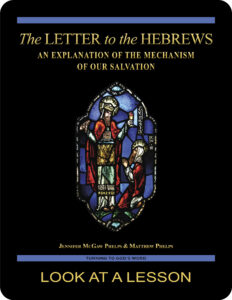faith
 In the Letter to the Galatians 3:26 (NABRE) Paul writes: “For through faith you are all children of God in Christ Jesus.” This idea is central to Christianity, and much has been made of it over the centuries. A clear understanding of the meaning of faith as a theological virtue is crucial to understanding this passage.
In the Letter to the Galatians 3:26 (NABRE) Paul writes: “For through faith you are all children of God in Christ Jesus.” This idea is central to Christianity, and much has been made of it over the centuries. A clear understanding of the meaning of faith as a theological virtue is crucial to understanding this passage.
The Greek word πίστις (pistis) is the word that in the New Testament is translated as “faith,” and it also can be translated as “trust” or “belief.” Confusion arises in how we perceive this concept due to the significant disparity between the English meaning and usage of the words trust and belief.
We typically talk about believing in something as an idea. “I believe in God.””I believe in freedom.” “I believe in truth, justice, and the American way.” The idea of belief focuses on what is being accepted. Trust as a concept, by contrast, focuses not on what piece of information we are accepting but on the person we are trusting. I trust my parents, my employer, my government, or my church. When we trust, we accept a person or an entity, and the concepts or ideas that we accept are secondary.
Faith as a concept originally meant the idea of trust rather than the idea of belief. Having faith in Jesus or in God means accepting God and all that he offers. Significant confusion results when we mistakenly presume that faith instead refers only to belief and that all God asks of us is to believe that he is or that he is God. To realize the promise in Paul’s statement that “through faith [we] are all children of God,” we are required to do more than accept God intellectually. We’re asked instead to surrender to God in trust. This passage should prompt all of us to ask ourselves whether we truly trust Jesus.
The Litany of Trust is a related prayer written by the Sisters of Life (www.sistersoflife.org) asking Jesus for deliverance from the things that hold us bound, and placing our trust in Jesus’ promises.
related topics: belief; believe in Jesus; faith (2); justification; little faith
you also may like our study of the Letter to the Hebrews (digital only)
 Many Christians struggle to understand one of the central mysteries of our faith: how Jesus can be both human and divine at the same time. The Letter to the Hebrews: An Explanation of the Mechanism of Our Salvation, an 18-lesson Catholic Bible study with an imprimatur, offers an in-depth look at the way in which Jesus’ dual nature allows for the salvation of humanity. The Letter to the Hebrews is designed to provide information that will encourage Christians to remain faithful. Click on the book’s cover to view a sample lesson.
Many Christians struggle to understand one of the central mysteries of our faith: how Jesus can be both human and divine at the same time. The Letter to the Hebrews: An Explanation of the Mechanism of Our Salvation, an 18-lesson Catholic Bible study with an imprimatur, offers an in-depth look at the way in which Jesus’ dual nature allows for the salvation of humanity. The Letter to the Hebrews is designed to provide information that will encourage Christians to remain faithful. Click on the book’s cover to view a sample lesson.
 Click on the picture of the statue of Moses with horns (above) to learn more about Lost in Translation. A new entry is archived each Monday. Contact us to receive Lost in Translation by email every week. You may use any of the contact links on our website to ask Matthew a question.
Click on the picture of the statue of Moses with horns (above) to learn more about Lost in Translation. A new entry is archived each Monday. Contact us to receive Lost in Translation by email every week. You may use any of the contact links on our website to ask Matthew a question.
